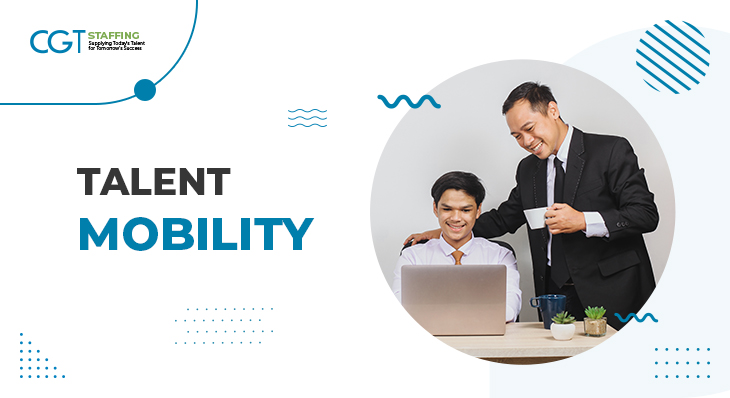In the ongoing talent war, organizations must adapt and evolve in order to attract and retain top-tier talent. One approach that is gaining significant traction is the implementation of a robust talent mobility strategy. It refers to the deliberate movement of employees within an organization to capitalize on their skills, competencies, and potential. By fostering a culture of mobility, businesses can not only retain valuable employees but also enhance their overall competitiveness. Additionally, it provides a valuable framework for managing challenging situations, such as dealing with insubordinate employees. This blog explores the key components of a talent mobility strategy and how it can help organizations stay ahead of the game.
Table of Contents
Understanding the Modern Talent Landscape
The talent landscape has witnessed a seismic shift in recent years. Traditional career paths and job loyalty have given way to a more fluid and agile workforce. Today’s employees seek opportunities for growth, learning, and diverse experiences. To meet these evolving expectations, organizations must embrace talent mobility as a strategic imperative.
Creating a Culture of Talent Mobility
A successful talent mobility strategy starts with cultivating a culture that encourages employees to explore different roles and functions within the organization. By promoting internal mobility, companies can unlock hidden potential and facilitate the acquisition of new skills. Moreover, it fosters a sense of belonging and loyalty, reducing turnover rates and associated costs. To create a culture of mobility, organizations should:
Emphasize Skill Development
In addition to relying on staffing agencies Pittsburgh, invest in comprehensive training and development programs that empower employees to broaden their skill sets. By offering a wide range of learning opportunities, organizations provide employees with the tools they need to thrive in different roles.
Encourage Cross-Functional Collaboration
Promote collaboration across departments and teams, enabling employees to work on projects beyond their immediate scope. This not only facilitates knowledge sharing but also ensures employees wellbeing by exposing them to different challenges, fostering a culture of innovation and adaptability.
Implementing a Structured Mobility Framework
While fostering a culture of mobility is essential, a structured framework provides the necessary structure and guidance for effective talent mobility. Here are some key components to consider:
Transparent Internal Job Postings
One of the best talent acquisition and recruitment strategies is establishing a centralized platform where internal job opportunities are advertised, allowing employees to explore potential roles across the organization. This transparency ensures fairness and equal access to opportunities.
Individual Development Plans
Encourage employees to create personalized development plans in collaboration with their managers. These plans should outline short and long-term goals, along with the necessary steps to acquire new skills and experiences. Regular performance reviews can serve as checkpoints to assess progress and realign objectives.
Mentorship and Coaching
Implement formal mentorship programs that connect employees with experienced professionals who can guide them in their career journey. Additionally, provide coaching and support to individuals transitioning into new roles, helping them navigate potential challenges.
Measuring Success for Continuous Improvement
To gauge the effectiveness of a talent mobility program, organizations need to establish measurable metrics. This enables them to track progress and make data-driven decisions. Key metrics to consider include:
Internal Mobility Rate
Measure the percentage of employees who have moved across roles within the organization over a specific period. A higher rate indicates a successful talent mobility strategy.
Employee Satisfaction and Retention
Regularly survey employees to gauge their satisfaction with career development opportunities and assess whether the talent mobility strategy is positively impacting retention rates.
Performance and Productivity
Analyze the performance and productivity of employees who have experienced internal mobility compared to those who have not. This data can provide insights into the impact of mobility on individual and team outcomes.
Finding the Right Balance in Recruitment Techniques
As organizations navigate the ever-changing talent landscape, finding the right balance between centralized and decentralized recruitment is crucial in creating an effective talent mobility strategy. The integration of both approaches allows for optimal talent acquisition and management.
Centralized recruitment brings consistency, expertise, and scalability to the hiring process. It ensures that talent mobility efforts align with the overall organizational objectives. On the other hand, decentralized recruitment empowers individual departments and teams to have ownership and flexibility in sourcing candidates who best fit their specific needs.
Organizations can leverage the strengths of both approaches. This balance is likely to foster an environment where talent mobility thrives, allowing employees to explore new opportunities and contribute to the organization’s growth and success.
Conclusion
A talent mobility framework, built on a culture of advancement and training, can serve as a powerful tool for attracting, retaining, and developing top talent. By providing employees with opportunities for growth, learning, and diverse experiences, organizations can unlock their full potential and drive innovation.
A structured framework, coupled with continuous measurement and improvement, ensures the effectiveness of the talent mobility strategy, and sustained success in the dynamic talent market consequently.
